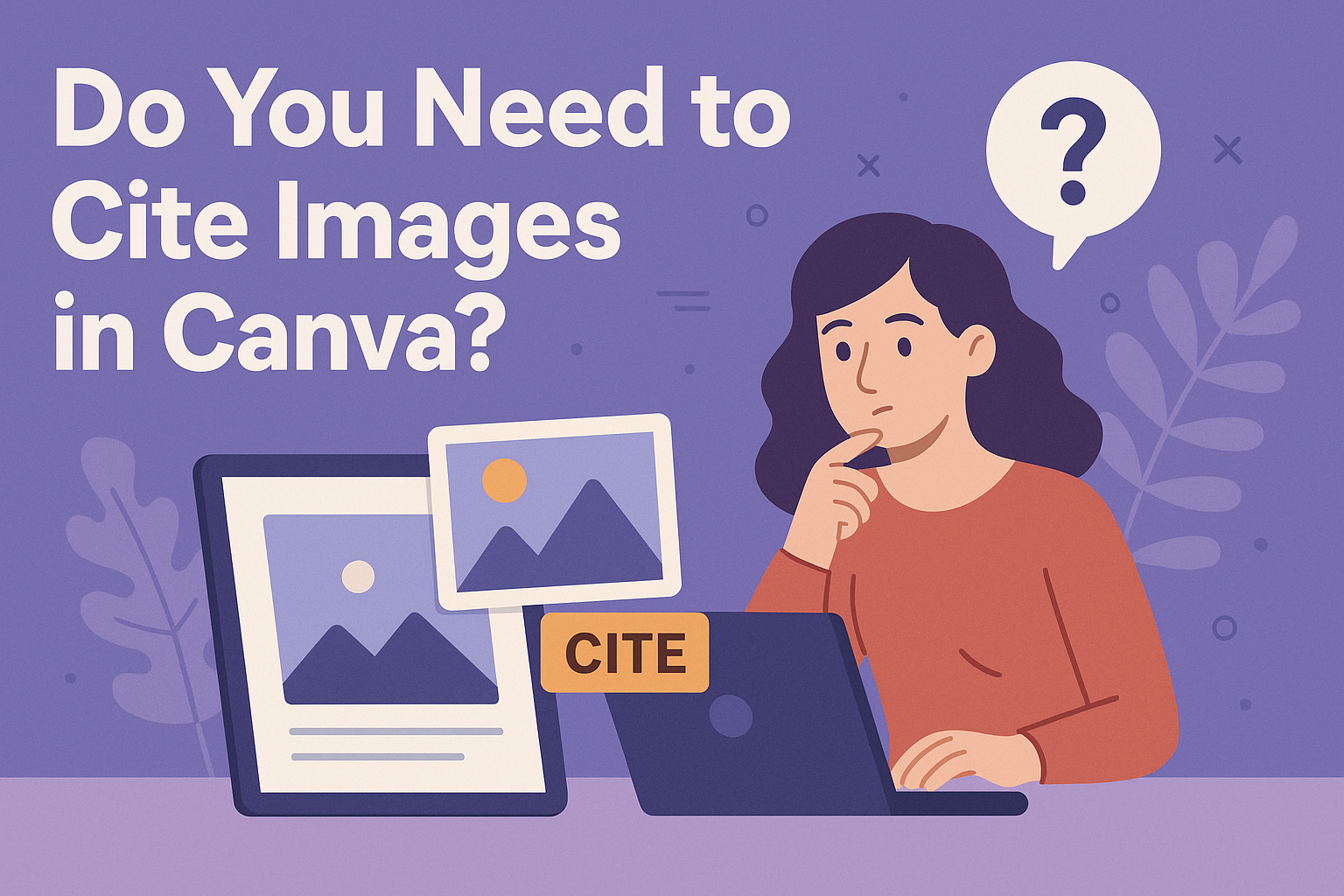Many people wonder if they need to cite images when using Canva for their projects.
In most cases, users do not need to provide a citation for images found on Canva, especially if they are using free stock images. This makes it easier for creators to focus on designing without worrying about extra paperwork.
Canva offers a vast collection of images, both free and premium, which can enhance any project.
While it’s great that users can use these images without citations, understanding when citations might be necessary is still important. Knowing the guidelines can help avoid potential issues down the line.
As designers work on their creations, they should keep in mind the importance of respecting image rights.
This blog post will explore when citing images is necessary and how to do it properly, ensuring every project is both creative and compliant.
Understanding Image Licensing
Image licensing helps users know how they can legally use digital images, especially on platforms like Canva. Different licenses come with specific rules, which are essential to follow.
Licenses and Usage Rights
Licenses define how and where an image can be used.
There are generally two main types of licenses:
-
Free Licenses: These images are available at no cost but may have restrictions. Users often need to attribute the creator, depending on the license.
-
Paid Licenses: These typically allow broader use. Users pay to remove watermarks and can use images without as many restrictions.
Knowing the differences helps ensure compliance. Users should read the specific licensing terms to avoid any legal issues.
Canva’s License Agreements
Canva provides several license agreements, which detail how to use images found on its platform.
-
Free Content License: This covers the use of images that are freely available on Canva. Users can use these images for personal and commercial projects without attribution.
-
Pro Content License: Available to users who subscribe to Canva Pro, this license offers more features. It also allows editing and has fewer restrictions compared to the free license.
Understanding these agreements is vital for proper use. Users can find detailed information in Canva’s Content License Agreement, making it easier to navigate image usage.
Citing Images in Canva Creations
Using images in Canva can enhance any project, but knowing when to cite is important. This section will clarify when citations are necessary and how to do it correctly.
When Citations Are Required
Citations are not always necessary in Canva.
For most free stock images, no attribution is needed, according to Canva’s licensing terms.
However, if a specific license for an image requires citation, it must be provided. If the author or the creation year is available, those details should be included.
For custom images or those from external sources, citing is essential to respect the original creator. It’s always better to err on the side of caution by citing images when in doubt.
How to Properly Cite Images
Citing an image in Canva includes a few key elements. The citation should include:
- Author of the image (if known)
- Year of creation (if available)
- Title of the image or a description
- Source information (e.g., Canva)
If a user is unsure, they can create a citation in a simple format. For example:
Author, Year, Title or Description, Source.
This straightforward approach helps ensure proper credit is given while keeping projects ethically sound. Always check the image license for specific requirements, as they can vary.
Best Practices for Ethical Design
Ethical design is essential for respecting the work of others while creating visually appealing content. When using platforms like Canva, understanding how to acknowledge creativity and intellectual property is crucial.
Respecting Creativity and Intellectual Property
Respecting creativity involves recognizing the importance of original work.
When using images from Canva, it is vital to check the licensing terms. Some images require credit to the creator.
Using images without permission can lead to copyright issues.
Designers should always aim to credit the original authors whenever possible. This practice not only fosters goodwill but also shows appreciation for their efforts.
Additionally, when creating designs, choosing stock images that are labeled for reuse is a good habit.
This ensures the designer is following ethical standards.
Always prioritize using images creatively while honoring the rights of others.

